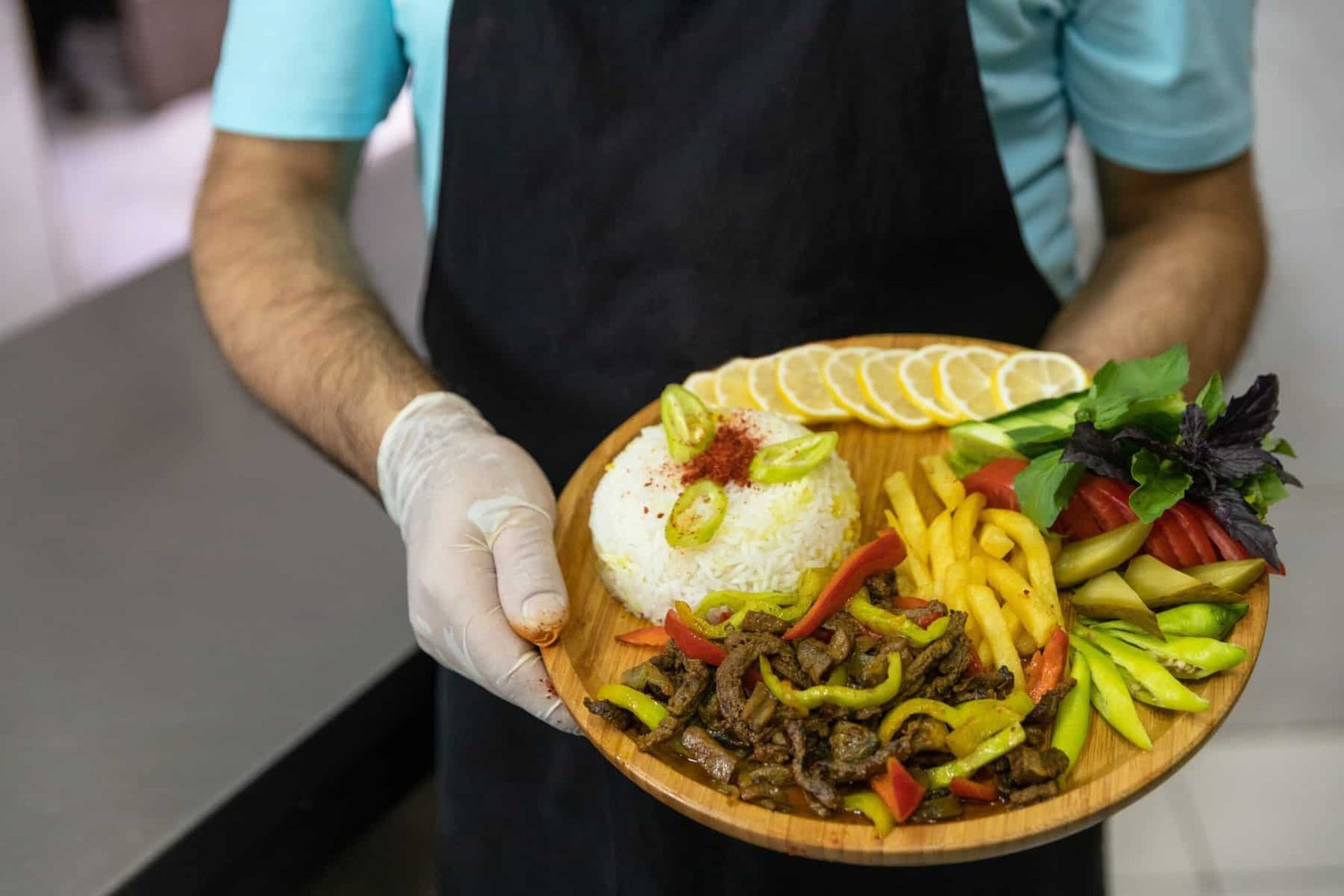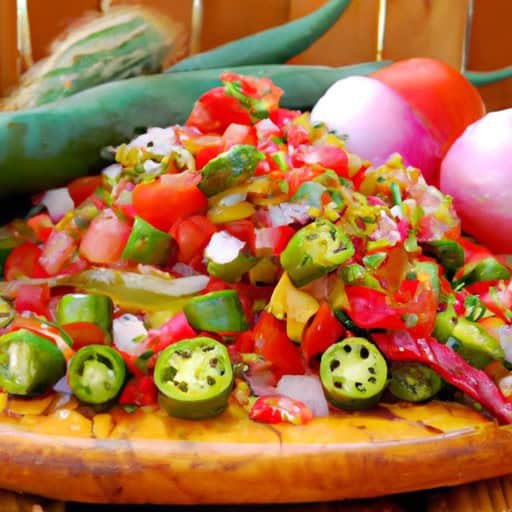Are you searching for the perfect traditional nopal salsa recipe? Look no further! In this article, we will uncover the key ingredients that make a traditional nopal salsa burst with flavor. Get ready to tantalize your taste buds with the vibrant and delicious combination of ingredients that give this salsa its unique and authentic taste. Get your chopping board ready, because you won’t want to wait to try this mouthwatering recipe!
Key Ingredients in a Traditional Nopal Salsa Recipe
Nopal Cactus
Nopal cactus, also known as prickly pear cactus, is a crucial ingredient in traditional nopal salsa recipes. This unique ingredient adds a distinct flavor and texture to the salsa. The flesh of the nopal cactus is firm yet tender, and it has a slightly earthy and tangy taste. Nopal cactus is also packed with nutrients, making it a healthy addition to your salsa.
Tomatoes
Tomatoes are another essential ingredient in a traditional nopal salsa recipe. They provide a rich and vibrant base for the salsa, adding both depth and a pleasant acidity. Choose ripe and juicy tomatoes for the best flavor. You can blanch and chop the tomatoes to bring out their natural sweetness.
Onion
Onions are a staple in many Mexican recipes, and they play a key role in nopal salsa as well. They add a savory flavor and a touch of sharpness to the dish. Red onions are commonly used in traditional nopal salsa recipes, as they offer a slightly milder taste compared to white onions.
Garlic
Garlic is known for its incredible flavor and versatility, and it definitely deserves a spot in your nopal salsa. Its distinct aroma and savory taste contribute depth and complexity to the salsa. It is best to finely chop or mince the garlic to ensure its flavor is evenly distributed throughout the salsa.
Jalapeño Peppers
Jalapeño peppers add a pleasant heat and a burst of flavor to the nopal salsa. These peppers are typically mild to medium in spiciness, making them a great choice for those who enjoy a touch of heat. You can adjust the number of jalapeño peppers to suit your preference, removing the seeds and ribs for a milder salsa.
Cilantro
Cilantro, with its bright and refreshing flavor, is a must-have herb in traditional nopal salsa. Its citrusy notes complement the other ingredients and add a vibrant freshness to the salsa. Chop the cilantro leaves finely and add them right before serving to preserve their aromatic qualities.
Lime Juice
Lime juice is the perfect acidic component that balances the flavors in nopal salsa. It adds a tangy kick and enhances the natural sweetness of the tomatoes and nopal cactus. Squeeze fresh lime juice over the salsa for a burst of citrus flavor.
Salt
Salt is a crucial ingredient that brings out the flavors of the other ingredients in the nopal salsa. It helps to enhance the natural sweetness of the tomatoes and onions, while also adding a savory element. Remember to season the salsa with salt to taste, ensuring it is well-balanced.
Olive Oil
A small amount of olive oil can be added to the nopal salsa to create a silky texture and add a subtle richness to the overall flavor. While olive oil is optional, it can contribute to a more well-rounded taste.
Sugar
Adding a touch of sugar to the nopal salsa helps to balance the flavors and reduce any excessive acidity or bitterness. Use a small amount of sugar, adjusting it to your taste preferences. This will help to enhance the overall taste and create a harmonious blend of flavors.

Preparation
Cleaning and Preparing the Nopal Cactus
Start by carefully cleaning the nopal cactus to remove any spines or thorns. Trim off any rough edges and wipe the cactus pads with a clean cloth or paper towel. Rinse them under cool water to remove any remaining dirt. Once cleaned, you can either chop the nopal cactus into small cubes or roast them for a deeper flavor.
Blanching and Chopping the Tomatoes
To blanch the tomatoes, bring a pot of water to a boil and carefully place the whole tomatoes in the boiling water for about 30 seconds. Remove the tomatoes and place them in a bowl of ice water to cool. This process makes it easier to remove the skin. Peel the skin off the tomatoes and chop them into small pieces. Remember to remove the seeds if desired.
Chopping the Onion and Garlic
Peel and chop the onion into small, uniform pieces. Finely mince the garlic cloves to ensure they are evenly distributed throughout the salsa. Chopping the onion and garlic into small pieces helps to distribute their flavors more evenly.
Preparing the Jalapeño Peppers
Remove the stem and seeds from the jalapeño peppers for a milder salsa. Finely chop the peppers and consider wearing gloves to protect your hands from the spiciness. Remember, you can adjust the quantity of peppers to suit your desired level of heat.
Chopping the Cilantro
Gently separate the cilantro leaves from the stems. Rinse them under cool water and pat them dry with a clean paper towel. Finely chop the cilantro leaves to ensure they are evenly distributed in the salsa. Add the cilantro right before serving to preserve its fresh flavor.
Juicing the Lime
Roll the lime on a countertop to soften it and make it easier to juice. Cut the lime in half and use a citrus juicer or your hands to extract the juice. Strain the juice to remove any seeds or pulp.
Mixing the Ingredients
In a large bowl, combine the chopped nopal cactus, tomatoes, onion, garlic, jalapeño peppers, and cilantro. Add the freshly squeezed lime juice and drizzle a small amount of olive oil over the mixture. Sprinkle salt and sugar to taste. Gently toss the ingredients together until well combined. Allow the flavors to meld together for at least 30 minutes before serving.

Tips and Variations
Roasting the Nopal Cactus
For a slightly different flavor profile, you can roast the nopal cactus before adding it to the salsa. Simply place the cleaned and chopped nopal cactus in a preheated oven at 425°F (220°C) for about 15 minutes or until tender and lightly charred. This adds a smoky and caramelized taste to the salsa.
Adding Other Peppers for Heat
If you crave extra spiciness, feel free to experiment with other peppers in addition to or instead of jalapeños. Serrano peppers, habaneros, or even chipotle peppers can be used to elevate the heat level to your liking. Remember to adjust the quantities accordingly, keeping in mind the desired level of spiciness.
Using Different Herbs for Flavor
While cilantro is the traditional herb used in nopal salsa, you can experiment with other herbs to customize the taste. Fresh parsley, mint, or even basil can add a unique twist to the salsa. Just remember to finely chop the herbs and add them as a finishing touch, as their flavors can be delicate and easily overpowered.
Adjusting the Sourness and Sweetness
If you find the salsa too tangy, you can reduce the amount of lime juice or add a pinch more sugar to balance the flavors. On the other hand, if the salsa lacks acidity, you can squeeze in more lime juice or add a splash of vinegar for a tangier taste. Taste and adjust the seasonings according to your personal preference.
In conclusion, a traditional nopal salsa recipe requires a combination of flavorful ingredients like nopal cactus, tomatoes, onion, garlic, jalapeño peppers, cilantro, lime juice, salt, olive oil, and sugar. By carefully preparing and chopping each ingredient, you can create a delicious and well-balanced salsa that is both tangy and savory. Feel free to experiment with different variations and adjust the seasonings to suit your taste preferences. Whether you enjoy it with tortilla chips, tacos, or as a condiment, this nopal salsa is sure to impress with its fresh and vibrant flavors.


